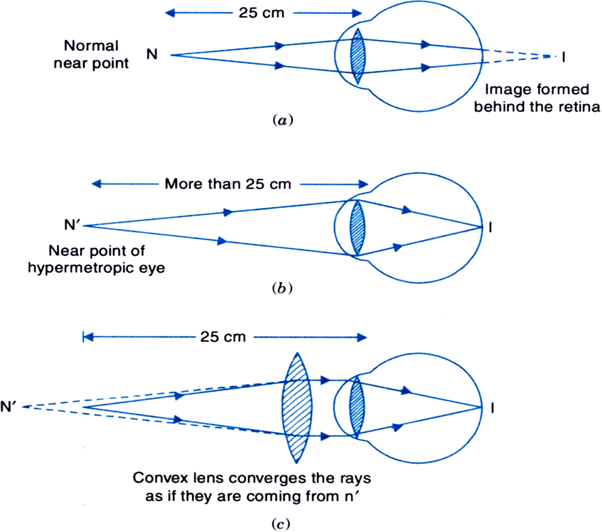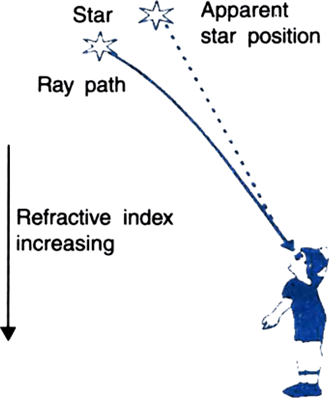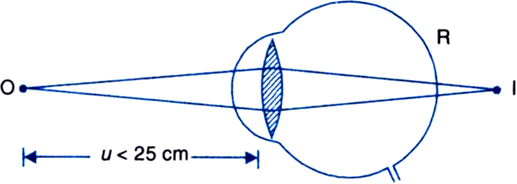
Make a diagram to show how hypermetropia is corrected. The near point of a
hypermetropic eye is 1 m. What is the power of the lens required to correct this
defect? Assume that the near point of the normal eye is 25 cm.

Explain why the planets do not twinkle.

Why do stars twinkle?

What happens to the image distance in the eye when we increase the distance of an object from the eye?

